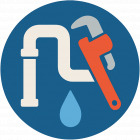Leak Detection for Homeowners: Low-Cost Methods, Hidden Signs & What Pros Use
Leaks are sneaky. A small drip can quietly escalate into a soaked subfloor, mold, or a sky high water bill. Below are practical, low cost ways to spot leaks early, subtle signs that homeowners often miss, and the tools professionals rely on when things get serious.
Cheap checks you can do in 10 minutes
- Read the water meter. Turn off all taps and appliances, note the meter reading, wait 15 to 30 minutes without using water, then check again. A change usually means a hidden leak.
- Toilet dye test. Drop food coloring into the cistern, wait 10 minutes, and if color appears in the bowl you have a leaking flapper.
- Listen and look. Put your ear to walls and floors, especially at night. Listen for running water. Inspect under sinks, behind appliances, and around the water heater for wet spots and mineral deposits.
- Paper towel trick. Wipe around pipe joints and fittings; a damp towel will reveal micro leaks faster than a glance.
Hidden signs that mean trouble
Mold or mildew on walls, a persistent musty smell, bubbling paint, or a floor that creaks or swells are all red flags. Unexpected spikes on your monthly water bill often point to continuous leaks, perhaps in irrigation lines or hidden supply pipes. Also, slow drains or frequent clogged toilet incidents may indicate partial blockages that are trapping water and stressing the system.
What plumbers use when DIY won’t cut it
When a visual check fails, professionals bring specialized tools: thermal imaging cameras to find cold wet areas behind walls, acoustic leak detectors that translate pipe noise into precise locations, electronic leak correlators for underground lines, and video drain cameras for inside sewer pipes. For water heater problems, plumbers perform pressure and element tests, and use inspection cameras to confirm whether a water heater leaking requires repair or full replacement. For complex jobs, locators and tracer gas help map exact pipe runs without destructive demolition.
When to call a pro
If you find active flooding, persistent moisture, discolored paint, bubbling drywall, or suspect your water heater leaking, call a licensed local plumber or emergency plumber. Small DIY fixes are fine for simple flappers and loose connections, but buried pipe failures, slab leaks, and water heater faults need trained technicians and plumbing services.
Catching leaks early saves money and prevents long term damage. Use the low cost checks to stay ahead, heed the subtle signs, and don’t hesitate to bring in the pros when the problem looks deeper than a towel can handle. #LeakDetection #PlumbingTips #EmergencyPlumber
